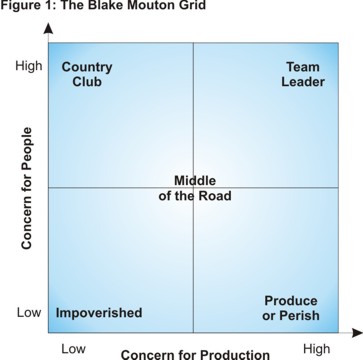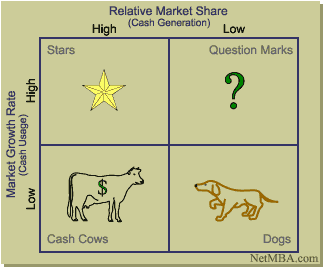Micheal Porter Value Chain

The term ‘Value Chain’ was used by Michael Porter in his book "Competitive Advantage: Creating and Sustaining superior Performance" (1985), for identifying ways to create more customer value.
(a)Value activity describes the
activities within and around an organization, and relates them to an
analysis of the competitive strength of the organization. Therefore, it evaluates which value each particular activity adds to the organizations products or services.
(b)Primary activities- Primary activities are directly
concerned with the creation or delivery of a product or service. They can be grouped into five main areas: inbound logistics, operations, outbound logistics, marketing and sales, and service.
Support activities - support activities which help to
improve their effectiveness or efficiency in those Primary activities. There are four main areas of support activities: procurement, technology development (including R&D), human resource management, and infrastructure.
Any or all of these primary activities are vital in developing a competitive advantage.
(c) Inbound logistics: Refers to
goods being obtained from the organisations
suppliers ready to be used for producing the end product.
Operations – Value creating activities that
transform the input into final product.
Outbound logistics – Activities required to get the
finished product to the customer, including warehousing, order fulfillment, etc
Marketing and Sales – Activities that
associates with getting buyers to purchase the product, including channel selection, advertising, pricing, etc.
Services – Activities that
maintain and enhance product value, including customer support, repair service, etc.
Procurement – process for
acquiring the various resource inputs to the primarily activities.
Technology development – Development of machines, computers, processes and system expertise of staff.
Human resource – Activities to
train develop and provide remuneration, recruiting staff.
Infrastructure – Maintenance of the general infrastructures of the organization including management, finance and planning.
Porters’ value chain is very important from view of developing on info. system/IT strategy, because the value chain framework helps to build a relative competitive advantages in terms of software in which each of organization are using. It also can be seen as one of two dimension in maximizing corporate value creation when dealing with customers.
This model can be used to assess the
effectiveness and efficiency of resource use within each activity in the chain.
Efficiency is to measure of how well resources are being used.
Effectiveness relates to how well resources are being allocated to those activities.
Porter's Generic Strategies

Porter’s proposes 3 generic strategies for achieving competitive advantage;
cost leadership, differentiation, and focus.
Cost leadership – refers to the strategy of
operating at a lower cost level than competitors and therefore being able to offer better value for money to customers. Cost leadership is most appropriate when a price or value for money is the most important factors in the buying decision. To achieve this strategy, economies of scale or exclusive use of a particular technology. Thus, increase market share.Each generic strategy has its risks, including the low-cost strategy. For example, o
ther firms may be able to lower their costs as well. As technology improves, the competition may be able to leapfrog the production capabilities, thus eliminating the competitive advantage. Additionally, several firms following a focus strategy and targeting various narrow markets may be able to achieve an even lower cost within their segments and as a group gain
significant market share.
Differentiation – refers to a seeking a competitive advantage by
doing something different to competitors. The “something” could be a different way of doing business. The value added by the uniqueness of the product may allow the firm to charge a premium price for it. The firm hopes that the
higher price will more than cover the extra costs incurred in offering the unique product.Hence; increase profit margin, increase bargaining power of supplier, and strength of strong sales team with the ability to successfully communicate the perceived strengths of the product.The risks associated with a differentiation strategy include
imitation by competitors and changes in customer tastes. Additionally, various firms pursuing focus strategies may be able to achieve even greater differentiation in their market segments.
Focus – focus strategy concentrates on a
narrow segment and within that segment attempts to achieve either a cost advantage or differentiation. A firm using a focus strategy often enjoys a high degree of customer loyalty, and this entrenched loyalty discourages other firms from competing directly.involves a
restriction of activities to only part of the market (a segment or niche) through:
a)Providing goods and/or services at lower cost to that segment (
cost-focus)
b)Providing a differentiated product or service to that segment (
differentiation-focus)
A Combination of Generic Strategies - Stuck in the Middle?
Michael Porter argued that to be successful over the long-term, a firm must select only one of these three generic strategies. Otherwise, with more than one single generic strategy the
firm will be "stuck in the middle" and will not achieve a competitive advantage.Porter argued that firms that are able to succeed at multiple strategies often do so by creating separate business units for each strategy. By separating the strategies into different units having different policies and even different cultures, a corporation is less likely to become "stuck in the middle."
Porter's 5 Forces
.jpg)
Michael Porter's 1979 framework uses concepts developed in Industrial Organization (IO) economics to derive 5 forces that determine the attractiveness of a market. They consist of those forces close to a company that affect its ability to serve its customers and make a profit. A change in any of the forces normally requires a company to re-assess the marketplace.
Porter explains that there are five forces that determine industry attractiveness and long-run industry profitability. These five "competitive forces" are:
-The threat of entry of new competitors (new entrants)
-The threat of substitutes
-The bargaining power of buyers
-The bargaining power of suppliers
-The degree of rivalry between existing competitors
The threat of New Entrants
New entrants to an industry can raise the level of competition, thereby reducing its attractiveness. The threat of new entrants largely depends on the barriers to entry. High entry barriers exist in some industries (e.g. shipbuilding) whereas other industries are very easy to enter (e.g. estate agency, restaurants). Key barriers to entry include:
-Economies of scale
-Capital / investment requirements
-Customer switching costs
-Access to industry distribution channels
-The likelihood of retaliation from existing industry players
Threats of Substitutes
The presence of substitute products can lower industry attractiveness and profitability
because they limit price levels. The threat of substitute products depends on
- Buyer' willingness to substitute;
- The relative price and performance of substitutes;
- The costs of switching to substitutes.
Bargaining Power of suppliers.
Suppliers are the businesses that supply material and other products into the industry.
The cost of item bought from suppliers can have a significant impact on company profitability. If suppliers have high bargaining power over a company, then in theory the company is less attractive. The bargaining power of suppliers will be high when:
- There are many buyers and few dominant suppliers
- There are undifferentiated, highly valued products
- Suppliers threaten to integrate forward into the industry
- Buyers do not threaten to integrate backwards into supply
Bargaining Power of Buyers.
Buyers are the people / organization who create demand in an industry.The bargaining power of buyers is greater when
- There are few dominant buyers and many seller in the industry
- Products are standardized
- Buyers threaten to integrate backward into the industry
- Suppliers do not threaten to integrate forward into the industry
Intensity of Rivalry.
The intensity of rivalry between competitors in an industry will depend on :
- The structure of competition- e.g. rivalry is more intense where there are many small or
equally sized competitors; rivalry is less when an industry has a clear market leader.
- The structure of industry costs- e.g. industry with high fixed costs encourage
Competitors to fill unused capacity by price cutting.
- Switching cost- rivalry is reduced where buyers have high switching costs. E.g. there is a
significant cost to buy from an alternative supplier
- Exit barriers- when barriers to leaving an industry are high (cost of closing down) then
competitors tend to exhibit greater rivalry.
Reference :
Porter, Michael E., Competitive Strategy: Techniques for Analyzing Industries and
Competitors.



.jpg)


.jpg)


.jpg)



 °
° 

.jpg)